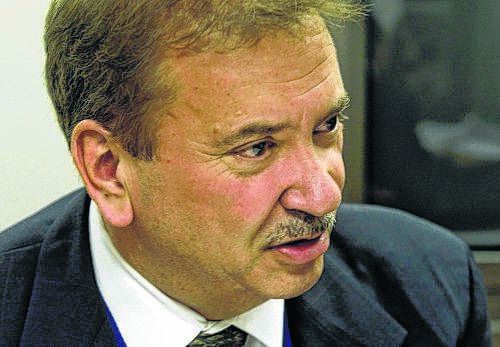The frenzy is in a lull at the moment, as the November deadlines to apply for Early Action have passed and the next set of deadlines are after the New Year. Seniors are catching their breath, some even celebrating as they begin to get acceptance letters. The fall was intensely stressful for most as they navigated the complicated world of college applications, some with guidance and others on their own. For those applying to numerous colleges, the pressure remains.
I had two kids accepted to college this month, one my daughter and the other a teenager in foster care who I work with. Both were equally satisfying, but the journey could not have been more different.
My daughter lives in a stable family with engaged parents. Discussions about college began around the time she started to talk. By the time she was in high school, she was well-versed in the difference between private and public, Ivy and Big Ten, technical and liberal arts. She knew how much was in her college fund and what her parents were willing to spend.
As clueless as we were, we figured it out, together. It began with a call to her guidance counselor in the fall of her junior year. I was under the impression that we would sit down for a meeting and get advice that would steer us in developing an appropriate list of colleges that included “reach” or “stretch” schools, those right at her academic level, and a few “safety” schools, just in case. What I learned was that guidance counselors don’t typically get involved that early. They are busy writing college recommendations and providing transcripts for their seniors, those who are on the front lines of the application process. We were given a few tips and sent on our way.
The American School Counselor Association recommends a ratio of 1 counselor to 250 students. I believe the Abington Heights School District administration does its best to stay as close to that as possible within the constraints of a tight budget. The average ratio across our state is closer to 400 to 1, and nationally it is almost 500 to 1. Looking at the many and diverse duties a guidance counselor has such as scheduling, assisting in course planning, and providing social and emotional support, it’s no wonder they can’t be involved in every step of future-planning.
And that’s okay, for a family like mine.
As a social worker for the foster care community, I am tasked with helping kids in care find and land in permanent situations, whether that be adoption, guardianship or, in the case of the oldest youth, a plan for after high school.
Tina came on to my caseload in October. A senior at a large urban high school, she had just been moved to a new foster home with one of her younger siblings. She had been separated from her other two siblings, due to issues of space in the foster homes. In our second session, I asked what she wanted to do after high school. “College,” she said.
I asked if she had taken the SATs or ACTs. “No.”
Where did she want to go? “My friend and I thought we would go the U, it being right here.” (The University of Scranton costs approximately $60,000 a year to attend.)
“Oh boy,” I thought to myself, “We have our work cut out for us.”
The deadline to register for the SATs was two days away. Being in foster care, Tina qualified for a fee waiver, but her guidance counselor had to process the paperwork. After two emails, three voicemails, and a visit to the school, Tina was registered. (Her guidance counselor never actually responded to any of the messages. A very caring therapist in the school-based-mental health program intervened when Tina showed up in the office, frustrated and teary-eyed.)
I briefed Tina about college-affordability and what financial aid would be available to her. It was a crash course in everything I had taught my own kids since they were toddlers. As an “independent” child (meaning one without parents), she would get the maximum in grants available, but that would not pay for the U. We used our sessions to fill out applications and complete the FAFSA (Free Application for Federal Student Aid). I found that, once I helped her Google the colleges she was interested in and begin the applications, I just needed to sit there quietly while she did the rest. The first was the hardest. We had to find her Social Security number and her high school CEEB code. But then it became easy. All she needed was someone to get her started and sit next to her, and she took off running.
We visited community colleges and state colleges. Tina interviewed with admissions, took placement tests and met with financial aid officers. After getting over the shock of the sticker price for some schools, she was further surprised to learn that the local college that is just now progressing from offering only Associate’s Degrees to a few Bachelor’s Degrees, costs more than double some of the state universities with fully-residential campuses. (Tina and I had decided she should live on campus if at all possible, so that her housing and meals would be taken care of and she could focus on school.)
Tina’s SATs came out lower than I had hoped. Her transcript had many blemishes. Early in high school, she had even failed a class. She had moved between districts two and three times a year due to her family getting evicted, being homeless and then moving between foster homes. But her junior year and the first quarter of her senior year were impressive. She was a natural at math. Her current 100 in Calculus was complimented by her high 90s all junior year in Trigonometry. I was hopeful that the admissions officers would take note of her amazing progress and her clear gift for numbers, especially because she aspires to go into Accounting.
And they did. She got her acceptance letter to one of those well-established, residential, state universities this week. It’s a few hours away, so transportation will be a challenge, but we will make it happen. She will be the first in her disjointed family to go to college. She is rising from the embers of trauma and devastation to forge a new and much brighter path.
What Tina and I did together is not typically part of my job description. I just happened to be in the college application process with my own child and able to offer assistance that I have no training in. My concern, then, considering the way our guidance counselors are stretched so thin, is … what about the kids who have no one to help them?
They aren’t all in foster care. Some have parents who didn’t go to college and don’t know where to start. Others might be overwhelmed with work or other siblings and unable to focus on the process. There may be parents battling addiction or illness. Who is there to help these kids make a plan?
My fear is that so many fall through the cracks. We have IEPs (Individualized Education Plans) for kids with special needs. Anyone with a learning disability, emotional problem, physical disability or speech/language issue has a plan that details exactly who will do what. The super-smart/gifted kids have IEPs to make sure they are properly challenged with educational enhancement opportunities. That is all very good, but what about the kids in the middle? What about the kids who don’t present with special needs, yet have no one to guide them into adulthood?
I am lucky. This spring, I get to go to two Accepted Students Days. There will be swag to collect in the form of T-shirts and school banners. There will be orientations, roommate-matching and placements in work-study jobs. Both my girls will be setting themselves up for a solid path to success.
All of my daughters’ friends will be settling into their college campuses across the region. Tina, on the other hand, will be one of many few coming from her background to be in that position. There should be more of them.
They say it takes a village. If you know a young person on the verge of transitioning out of high school, someone who may not have a great support system or lacking in direction, ask them some questions. See what their plans are. Until future-planning becomes a required part of every curriculum, offer to lend a hand. It doesn’t take much to give a little nudge to a teenager who is unsure, scared or overwhelmed.




